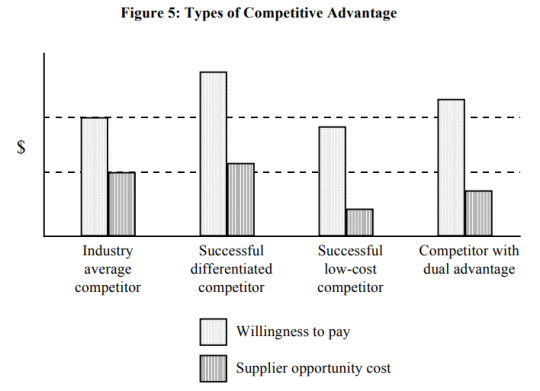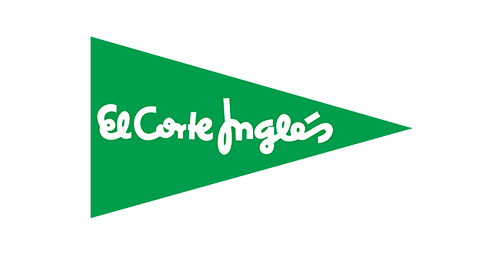Don't wanna be here? Send us removal request.
Text
Self-love should be promoted more often
In Portugal there is saying: “A galinha da vizinha é sempre melhor que a minha” or in English: (even though in Portuguese it rimes and in English it doesn’t) “The neighbor’s chicken is always better than mine”.
To me this saying says a lot how the human mind works: In general people want what they don’t have.
If we think about it this is a very dangerous (almost self-destructive) characteristic of our personalities and one that anyone with the power to do so, should not amplify.
Where I come from, it is frequent to see 50 year old’s that look like 70 year old’s because they spent their lives “destroying” their skin in the sun to look “better” according to some societal idea that being tanned is better than not. I would never think that on the opposite side of the world there would be people trying to achieve the exact opposite but again it just reinforces the Portuguese saying and the idea that we want what we don’t have.
One topic that I have become more and more aware in recent years is the “societally imposed” obsession with weight (affects everyone but specially women). In TV, commercials, magazines we are constantly surrounded by “perfect bodies” and we believe we must all have the same body. I would say that more than 50% of the women I know in my generation have some type of eating disorder.
These “perfect looking” models make a living out of perfecting their bodies, it is their job to do so. Thinking we must have the body of a model is the same as thinking we must play like Tom Brady just because we see him on TV however our minds do not work in such a rational way, and so obviously we want to have the neighbor’s chicken.
This societal tendency to always want what we don’t have, coupled with corporate greed to make money out of it is a very dangerous cocktail. Companies that sell the promise of what we don’t have are just amplifying the need to have it, and thus worsening the problem.
To me, Instagram is the biggest amplifier of these “insecurities” humanity has ever faced as it creates a negative loop of wanting to be what we are not, and pretending to be what we are not, making others think we are, and in their turn also wanting to be. This just creates a never ending loop of insecurities. However I am very glad to see that some influencers who have the power to start changing this mentality are already fighting it with posts such as this one:

To us, Sloanies, future principled leaders we will hopefully get to positions with real impact power and will help eliminate this mentality and promote one of self-love, even at the cost of some potential extra profit.
1 note
·
View note
Text
Please don’t slice PB
Obviously Roger’s 5 factors are not binary as I am about to use them, but for simplification purposes I thought it would be useful to map them out in the following table:

To me, the only really promising of all 4 products is Polytrack as the “only” weakness it has is the triability due to the investment needed. It looks to me has it has all these advantages versus its predecessor however they are not so obvious until anyone invests in it. However I think once the wheel starts spinning everyone else will adopt it: It has a relative advantage (safer, less muddy), it is compatible with existing values and experiences (you can’t even see the difference on TV), it is not complex at all, and for all the industry its advantages are observable (less injuries, more racing, more money) once you are able to find early adopters.
Looking at the table for Stave Puzzle can be misleading as I evaluated the 5 factors based on general population and Stave Puzzle is a very good product but for a niche market, so it has in fact relative advantage, compatibility and complexity but only for avid puzzle solvers looking for their next big challenge, for the rest of the average puzzle fans compatibility and complexity will prevent this from being a huge success as it challenges the status quo of traditional puzzles. So I think Stave Puzzle is in fact good but only for the “early adopters” side of the curve.
The new wheel even though it has in fact a relative advantage as it is much easier to store and if people adopt it it is observable, in the sense that if people start arriving to work with their folded bikes others will see it, however in my opinion the other three factors will prevent it from ever “taking off” compatibility being the most important of them all, when people buy a bike they are not looking for something new, so even though this new feature has its advantages I think that it is not what people are looking for.
And finally Sliced PB is in my (regular PB lover) perspective not a great product, yes it has a relative advantage in the sense that you don’t potentially ruin your slice of bread by spreading PB, and yes it is not complex and it is easy to trial but to me the deal breaker is compatibility. Who are the PB lovers that don’t like it’s texture? or the ability to spread it on anything (not only bread)? And who buys PB on a frequent basis? PB lovers! So I don’t see this product taking off as I think it will rock the core of PB lovers (as it did to mine).
1 note
·
View note
Text
Being the best has a cost (SIA)
There are 3 ways to have a competitive advantage: You can either have a cost advantage, a willingness to pay (WTP) advantage or a (very rare) dual advantage (Cost+WTP).

Typically in order to have a WTP advantage one has to incur higher costs than the competition in order to provide “something else” the competition doesn’t to the customer so that they see your product as something that is worth the “extra buck”.
Reading this case really took me back to Portugal and one of my favorite stores: “El Corte Ingles” (ECI from now on). ECI is a Spanish department store where you can find virtually anything with the best customer service you can imagine (almost always at a higher price). I have countless stories of unbelievably good customer service but this one I think really defines it the best. My parents bought 12 outdoor dining chairs that had 1 year of warranty. After a couple of months one of the chairs broke and they replaced it without asking questions, a month later another one broke, same outcome. When it got to the 3rd chair broken my parents said to them: “We know you have great customer service and you always exchange them but at some point, the warranty will end and after a couple of months we will be out of chairs” to which they responded by collecting all the chairs (at this point, 8 months old used in the outdoor chairs) and giving them a full refund.
This might have cost them roughly a thousand dollars, but it won over their hearts (and mine) forever. In fact it won it over so bad that while reading a case about an airline I immediately remembered them. And so both my parents and me (and many others who had similar experiences) will surely keep on buying overpriced items with them because emotionally there is an implicit feeling of safety and trust.

The reason I am writing about El Corte Ingles is that there are many similarities between them and SIA. They both listen to their customers, they both empower their employees to have freedom to take care of customers, but most of all they both understand that having such customer loyalty and WTP comes at a cost.
There is obviously a fine line between investing money in “luxuries” the customer values or wasting it things they don’t. But, throughout it’s history SIA kept “listening” to the customer through various channels, thus making the right choices of where to invest and creating the image of “Best in class” in every aspect of the business in the mind of the customer.
There is evidence that some customers are in fact switching over to BA for the new seats which means they are not some futile investment, and so in my opinion, regardless of the crisis that is affecting the Airline industry, SIA must invest in these seats (as did ECI in my parent’s chairs) at the risk of degrading their long built image of leaders in service and thus losing loyal customers if they don’t.
2 notes
·
View notes
Text
Ego, Experimentation’s biggest enemy
As a wannabe entrepreneur with the dream of one day creating my own company I am always looking around the companies I work for in search of what to replicate in my company, but most importantly of what not to replicate.
Lean startup, design thinking, e.t.c. all have the same intrinsic idea behind it: it’s much cheaper to fail early than to invest time and money in things only to find out if they work or not a couple of months (or years) later. I have been exposed to this approach and mentality before I started working, as has everyone in my generation, however most of the people who already work at the companies we join after finishing our studies have not. To them experimenting is a sign of weakness, it signals that you don’t know what you are doing.
Throughout my career it has happened too many times for me to either crunch a lot of numbers to reach a data driven recommendation or propose an experiment only to hear “No, no, my intuition tells me…” in fact I had to deal with it so many times it ruined the word intuition to me. If someone says to me: “I am very intuitive” I immediately assume they don’t know how to handle data.
But the truth is that experimentation is the future, it is no longer a theory. Many of the worlds biggest companies thrive on experimentation, however most of the other ones still don’t and are filled with old school managers who don’t get how important it is.
So, if I had to say a word of motivation to all my fellow wannabe entrepreneurs who are still grinding it out in the big corporate world with bosses that think they need to impose their intuition to show they are worthy of their jobs, it would be: “Don’t get caught in the intuition storm, and make sure when it gets to your turn of being the boss you remember to experiment”
2 notes
·
View notes
Text
Reflections on Corona Beer
To me, the key sentence in this whole case is Michael Foley’s: “People don’t drink beer, they drink marketing.”
In that sense, in order to surpass Heineken in the US Market, Corona must be able to adapt it’s marketing to keep up with the ever changing consumer landscape and make sure they create a strong brand and really connect with their consumer’s.
In my opinion, Fernandez and Diez should reconsider Corona’s traditional “Fun, Sun, Beach” theme in their U.S. communication strategy due to 4 main reasons:
1- There are more and more Hispanics in the US and their buying power is increasing:
“According to the U.S. Bureau of the Census, the U.S. Hispanic population totaled 27 million in 1994, an increase of 28% over 1990, versus one of only 6% for the total country.”
“Hispanics are projected to number . . . 88 million in 2050. By then, nearly 1 in 4 Americans may be Hispanic.”
“Hispanic population in the United States grew by more than 30%, its buying power has grown by more than 65%.”
“Corona managed to attain a 30% share, making it the preferred imported beer among Hispanics.”
2- Consumer’s that spend the most are young:
“Americans below the age of 25 spent twice as much per-capita on alcoholic beverages than people over 35 years.”
“Though only 52% of the U.S. population was 45 years old and under, in 1996, this population segment consumed over 68% of imported and around 62% of domestic beer.”
3- The geography of consumption is changing (which if analyzed thoroughly, will surely give insights on who the customer is):
“Altogether, the top 10 volume states account for more than one-half of the entire U.S. beer market but there was great disparity in the growth experienced by the various regions: while the Northeast and the Midwest grew 4.9% and 6.0%, respectively, the South and the West grew 23.3% and 35.3%, respectively.”
4- Corona’s marketing budget is 1/3 of Heineken’s budget:
“Modelo spent $5.1 million on U.S. advertising for all its exported brands in 1996, up from $600,000 in 1985, and $1.7 million in 1990.29 Heineken’s U.S. advertising budget was $15.1 million”
In summary, traditionally Corona’s marketing is around selling ���vacation in a bottle”, however it might be the case that the new consumer landscape “asks” for a new type of communication.
On one side, Hispanic people are in terms of brand identity the most obvious consumer for Corona, however targeting beer only to Hispanics was risky a couple of years ago not only because it was only a small percentage of the market, but also because their buying power was lower than average (and Corona positioned themselves as premium in the US). But the landscape changed and not only there are more and more Hispanic people but also their buying power is increasing which might justify adjusting to also have them as the recipients of Corona’s marketing. By not adapting their communication Corona is at risk of being perceived as a “beer for gringos” (and therefore a part of Hispanic’s dissociative group) by this ever growing chunk of the market.
On the other side consumption per capita is much higher on younger customers which might also justify adjusting their marketing to “call out” for the younger consumer.
Furthermore there might be other considerations to take from the geography changes in consumption that might have to be baked in this change in communication. (which as a non American I struggle to do just looking at the region’s names)
And to top everything, the fact that Corona’s marketing budget is 1/3rd of Heineken’s budget really comes to show that if they do in fact want to surpass Heineken they really need to speak directly to the heart of their customer, create a solid image of what Corona is in the consumer’s mind with a smaller amount of money in order to outgrow Heineken.
3 notes
·
View notes